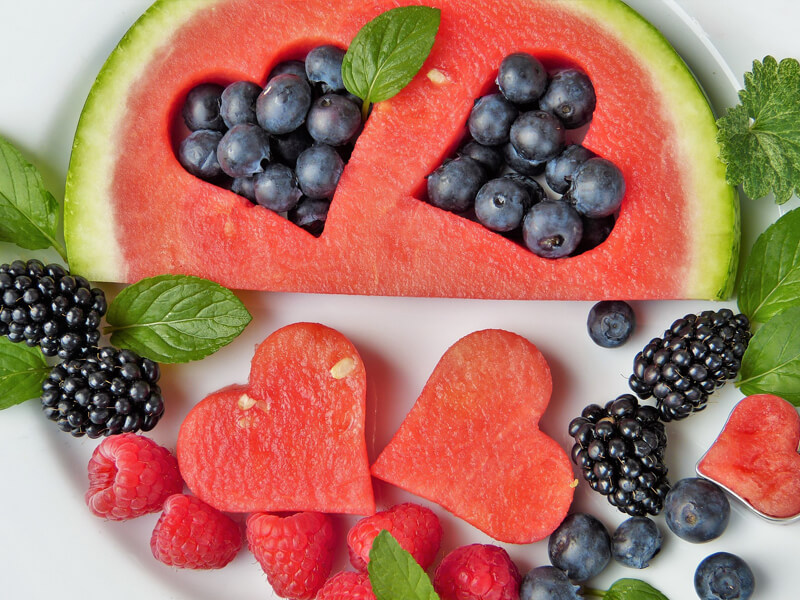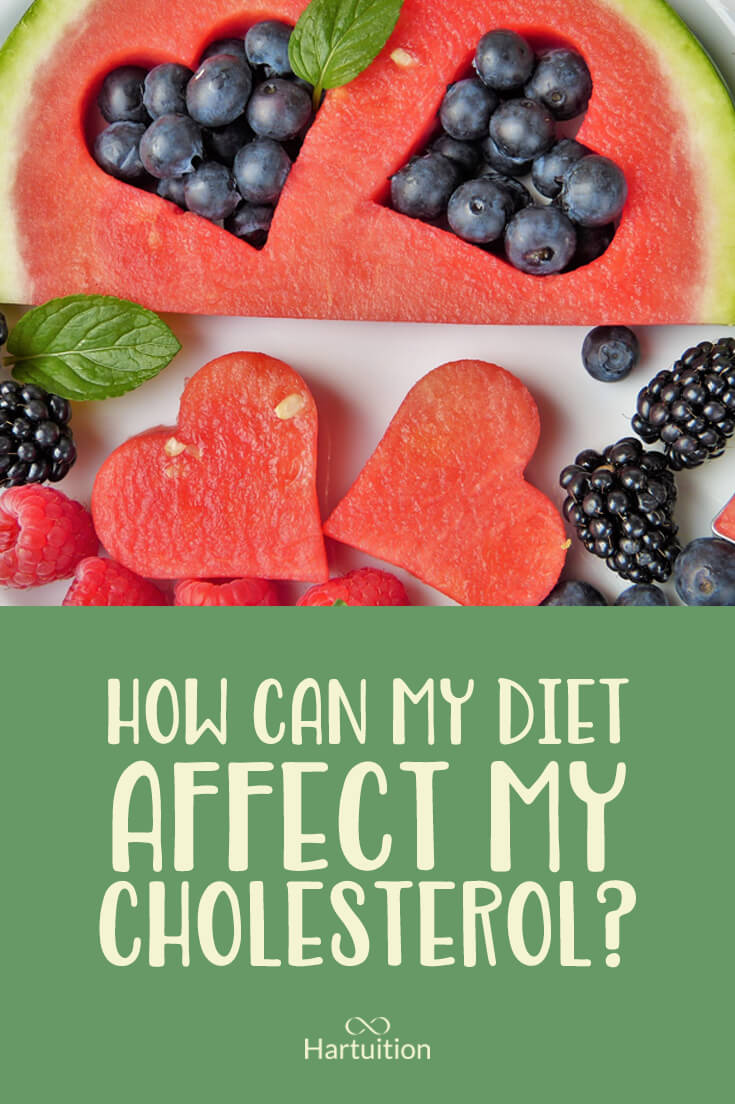Saturated fat is the macronutrient most heavily linked to blood cholesterol, particularly the type associated with heart disease, and is found in animal fats, such as butter, lard, and fats from meat. Being mindful of these fats in your diet and making sure you aren’t going over the recommended 20g per day is a good step towards achieving a healthy cholesterol.
Replacing saturated fats with unsaturated fats will make the biggest difference to your health. Unsaturated fats are found in liquid vegetable oils, as well as, in nuts, seeds, legumes, avocados, and omega-3 rich oily fish that’s rich in omega-3. These foods will help to lower the bad cholesterol and raise the levels of good cholesterol.
 Is saturated fat really bad for us?
Is saturated fat really bad for us?
There is a lot of controversy around saturated fat right now. Is it actually bad for you? Is polyunsaturated fat now bad for you? Is coconut oil a superfood?
The great but tiring thing about the world of nutrition is that research is constantly evolving, so you have to keep up to date with the most significant bodies of evidence. Sometimes it can contradict what came before.
The 2014 Annals of Internal Medicine published a metanalysis (basically a big review of studies) on the effect of saturated fat on coronary risk. It concluded that eating less saturated fat doesn’t lower a person’s risk of heart disease. This has caused uproar in the media, because it flies in the face of national public health recommendations that have been around for years.
But is the study representative? Well, no. When Walter Willet, the chair of the department of nutrition at the Harvard School of Public Health (HSPH), was asked his opinion on the metanalysis he said: “I knew something was fishy”. He requested a data supplement from the journal and noticed that the authors had pulled incorrect numbers from some of the original studies. He also noted that the authors had left out some important studies from their analysis.
Scientists, often pull conclusions from the most relevant data. As Bruce Griffin, professor of nutritional metabolism and expert in Lipid metabolism at the University of Surrey, said in response to the metanalysis: “The recommendation to reduce saturated fats and replace them with polyunsaturated fats is based on 60 years of cumulative evidence, it is far more likely to be right.”
Although this metanalysis raises some important questions, an analysis is only as good as the studies it is based upon, and if part of the argument is missing, it is misleading. The evidence for a relationship between reducing saturated fat and heart disease is complicated; it depends on what you replace that fat with, as Walter Willet, chair of the HSPH department of nutrition explains.
“People don’t just remove saturated fat from their diets. They replace it with something else. Exchanging a hot buttered cheesecake for half a dozen donuts does not help your heart; swapping it for grilled salmon with greens and olive oil does.”
So, the research can often be taken out of context by the media and exaggerated. In fact, Emanuele Di Angelantonio, the senior author of the Annals’ metanalysis, believes that the message of his study has been distorted:
“It was reported as ‘butter and burgers’ and that’s not what our paper said. What the paper said was that the story on saturated fat is slightly more complicated than we thought.”
 Fat versus sugar
Fat versus sugar
Some scientists argue that sugar has caused the problems with obesity in the world, and that cutting out saturated fat has, in fact, made us fat. I think it’s extremely narrow-minded to blame one factor for such problems. There is no doubt that too much sugar in our foods is detrimental for our health, and that if saturated fats were replaced with sugary foods and refined grains it would also have a detrimental effect. However, I believe it is a combination of this and a lack of physical activity that has resulted in the obesity epidemic we face, not a reduction in the population’s saturated fat intake. Guidance around the world is unanimous in suggesting limiting sugary foods, and that carbohydrate intake should come from wholegrain sources wherever possible. It has never been the public health’s advice to replace saturated fat with refined carbohydrate. As boring as it may seem, it comes back down to the age-old guidance of a varied and balanced diet.
Thomas Sanders, head of diabetes and nutritional sciences division at Kings College London, recently carried out a review of the evidence in this area. He found that saturated fat intakes have fallen and are now close to guideline amounts, and supports evidence that shows that replacing the saturated fat with unsaturated fat lowers the levels of bad cholesterol in our blood.
Sadly, the media reports around the Annals of Internal Medicine’s metanalysis is effectively encouraging people to up their saturated fat intake again. To solely blame carbohydrates and promote saturated fat is a not only dangerous for our diets but also for the planet.
 What about coconut oil?
What about coconut oil?
Coconut oil is high in saturated fat, and it actually contains about 85-90% saturated fatty acids. Many believe that coconut oil can raise our levels of good cholesterol. In fact, saturated fat increases our levels of both good and bad cholesterol, but it is believed that coconut oil increases the levels of good cholesterol more than bad.
What is missed out from this argument is that unsaturated fats (like those in olive oil) lower bad cholesterol and increase good cholesterol, so they’re doubly beneficial. Therefore, although there is an argument that coconut oil isn’t as bad as the saturated content of it suggests, more research is needed. You are better off choosing an oil rich in unsaturated fats such, as olive oil or sunflower oil, and making sure you get enough omega-3 fatty acids in your diet. Check out the recipe below for an example dish.
Although the world of nutrition is rife with debate, there is one area that the majority of people agree on: we need to move the emphasis away from nutrient-based recommendations and replace it with food-based recommendations. How our diet interacts with our bodies is a hugely complex process and we need to look at the overall picture rather than focusing on the impact of one nutrient. Public nutrition advice should always be questioned, but we need to remember it is based on a collective of good evidence, created over a long period of time, looking at the whole picture. You can find more information on how to develop a healthier lifestyle below.

Mighty Mackerel & Other Nutritious Fish
With Mixed Quinoa and Tomato Salad
Ingredients
SALAD
- 1 Cup of quinoa
- ½ a lemon
- 6 ripe large mixed-colour tomatoes
- 1 fresh red chilli
- 2 tablespoons extra virgin olive oil
- 1 tablespoon balsamic vinegar
MACKEREL OR WHOLE FISH OF YOUR CHOICE
- 4 x 200 g whole mackerel (or one large other whole fish), scaled, gutted (ask your fishmonger), from sustainable sources, ask your fishmonger
- 1 heaped teaspoon ground coriander
- Olive oil
- 2 sprigs of fresh rosemary
- 2 cloves of garlic
TO SERVE
- 2 heaped tablespoons fat-free natural yogurt
- 2 heaped teaspoons jarred grated horseradish
- a couple of sprigs of fresh basil
Instructions
Ingredients out • Kettle boiled • Medium lidded pan, medium heat • Large frying pan, high heat
Put 1 Cup quinoa and 2 Cups of boiling water into the medium pan with a pinch of sea salt and the lemon half, then pop the lid on and stir every now and again.
On greaseproof paper, score the mackerel on both sides at 2cm intervals down to the bone. Rub all over with salt, black pepper and the ground coriander, then put into the large frying pan with 1 tablespoon of olive oil.
Slice the tomatoes any way you like and arrange on a large board or platter, then finely slice and sprinkle over the chilli.
Strip the rosemary leaves over the fish, then crush and add the whole garlic cloves. Turn the fish when golden (roughly 4 to 5 minutes on each side).
When the quinoa is cooked (after roughly 10 minutes), drain it and use tongs to squeeze over the lemon juice, then spoon the quinoa into the centre of the tomatoes.
Drizzle with 2 tablespoons of extra virgin olive oil and the balsamic, and a pinch of salt and pepper. Lay the crispy fish on top.
Mix the yogurt and horseradish together and dollop it over the fish. Scatter trimmed basil leaves and serve.
Serves 4



